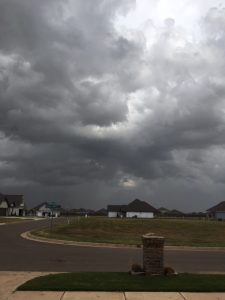
As the Gulf Coast braced for the arrival of Hurricane Laura and crude supplies dropped for a fifth straight week, U.S. oil futures settled Wednesday on a mixed note but still held their ground at the highest finish since early March. But global benchmark prices slipped.
West Texas Intermediate crude for October delivery inched up by 4 cents, or 0.1%, to settle at $43.39 a barrel on the New York Mercantile Exchange. October Brent crude the global benchmark, meanwhile, lost 22 cents, or 0.5%, to $45.64 a barrel on ICE Futures Europe.
Prices failed to find much support from a fifth straight week decline in U.S. crude inventories amid the uncertainty surrounding the actual impact of the storm on energy supply and demand.

The storm was felt late Wednesday afternoon in central Oklahoma as dark clouds rolled overhead and thunder sounded a threatening warning.
There is concern that the oil market “may reverse some of the gains we have seen in demand because of the storm track,” with the potential for power outages and a decline in the number of people driving, Phil Flynn, senior market analyst at The Price Futures Group, told MarketWatch.
“Overall the data suggests that demand will bounce back after the storm passes, but right now the trade is taking an abundance of caution,” he said.
The Bureau of Safety and Environmental Enforcement on Wednesday estimated that 84.3% of the current oil production in the Gulf of Mexico has been shut in, along with around 60.9% of natural-gas output, unchanged from Tuesday’s estimates.
Over 45% of total U.S. petroleum refining capacity is located along the Gulf Coast, according to the Energy Information Administration. Reuters reported Tuesday that refiners that produce gasoline and diesel fuel planned to halt nine facilities that process almost 2.9 million barrels a day of oil, or 14.6% of U.S. total capacity.




